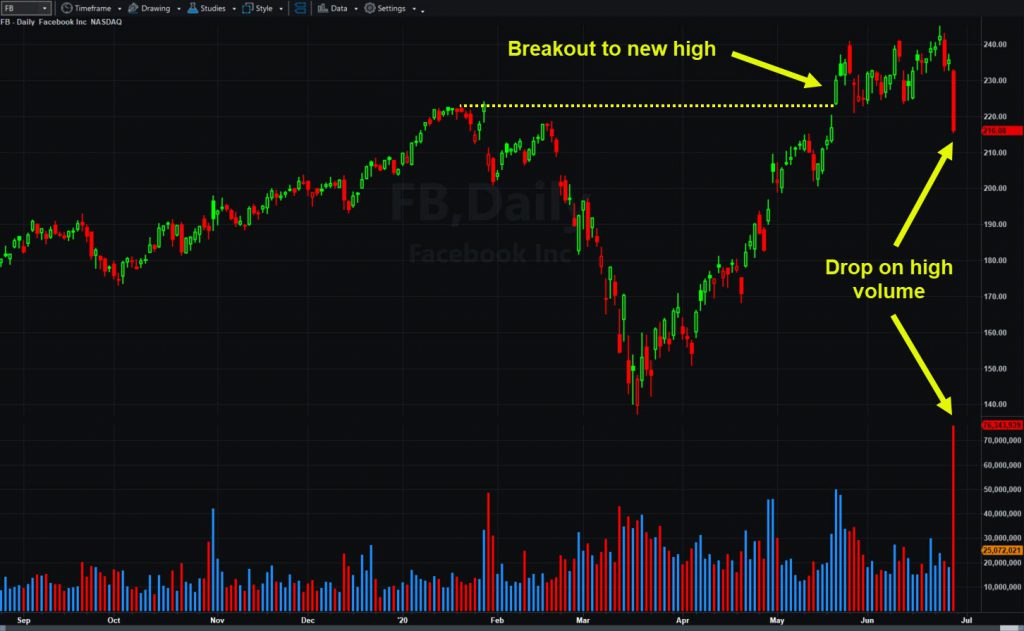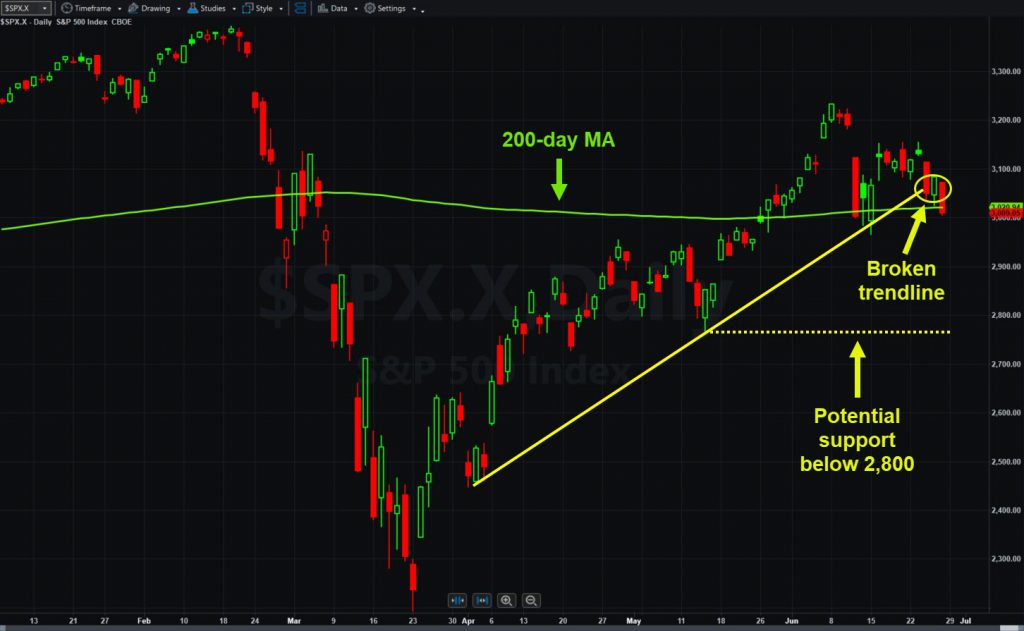Stocks fell again last week as the coronavirus pandemic made a comeback.
The S&P 500 slid 2.9 percent between Friday, June 19, and Friday, June 26. It was the index’s second negative week in the last three, with more than 85 percent of its member stocks losing value. The market’s now on pace for its first losing month since March.
Stocks broke down on Wednesday as new cases of Covid-19 spiked to their highest level since early March. The economic picture also worsened as jobless claims and oil inventories missed estimates.
That combination of news hammered “reopening” stocks like airlines, energy and cruise lines. Banks dropped after Federal Reserve limited stock buybacks and dividends, fearing the weak economy would push more loans into default.

Last week additionally saw advertisers boycotting social-media giant Facebook (FB). This creates a new risk for the Nasdaq-100, which had been a major source of strength for the market.
All Eyes on 3,000
The current situation focuses attention on the S&P 500’s price chart. The index rallied sharply between early April and early June, only to stall at the same area where it first crashed on February 24. It then consolidated in a tight range above the psychologically important 3,000 level.
| Gap (GPS) | +13% |
| ResMed (RMD) | +7.5% |
| Accenture (ACN) | +5.4% |
| EBay (EBAY) | +5.4% |
| Akamai Technologies (AKAM) | +4.9% |
Traders may now watch this line, which is also near the 200-day moving average. Were the sharp drops on Wednesday and Friday of last week the start of an downside acceleration down through support?
Volatility could increase if 3,000 breaks. Chart watchers may next look for a test of the late-April and early-May peaks around 2,950. Below that, support may be under 2,800. See the chart for more.
Gold Miners Shine
Housing also had some bad news last week as more borrowers asked for permission to delay mortgage payments. Demand for loans to purchase homes declined as well. Housing, like big tech firms, had been viewed as more resilient in the current environment. Will that hope continue?

Gold miners were the best performers last week with a gain of more than 4 percent. They’re often viewed as safe havens that benefit from weak economic growth.
Software companies and Chinese technology stocks also eked out small gains. Both groups had recently broken out to new 52-week highs.
Retailer Gap (GPS) was the single best performer in the S&P 500. It surged 13 percent after partnering with musician Kanye West to offer the Yeezy Gap clothing line.
Holiday Shortened Week
This week is shortened by Independence Day, observed on Friday, July 3. Still, it has several important events like jobs data and the end of the second quarter.
Pending home sales are the main item this morning. Micron Technology (MU) reports earnings after the closing bell.
| American Airlines (AAL) | -23% |
| Wynn Resorts (WYNN) | -20% |
| Norwegian Cruise Lines (NCLH) | -16% |
| Royal Caribbean Cruises (RCL) | -16% |
| Kohl’s (KSS) | -16% |
Tomorrow is the last day of the second quarter. The S&P 500 is up 16 percent since March 31, making it the best quarter since the end of 1998. Consumer confidence is also due in the morning and FedEx (FDX) reports after the closing bell.
Wednesday brings ADP’s private-sector payrolls report and the Institute for Supply Management’s manufacturing index. Both may provide more clues on how quickly the economy is recovering from coronavirus. Macy’s (M) reports earnings in the premarket.
Thursday brings the government’s jobs report for June and weekly jobless claims. Those are also potentially important.






















